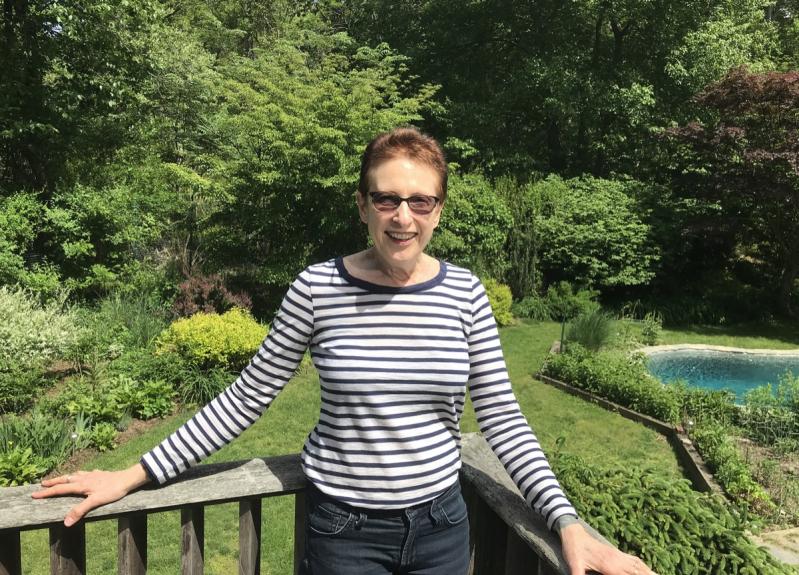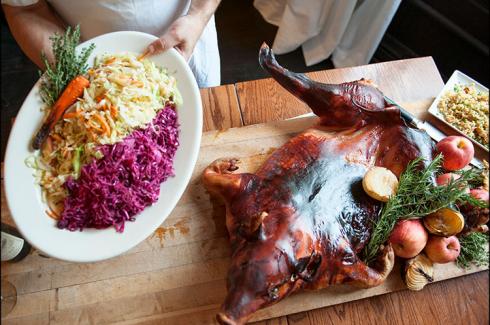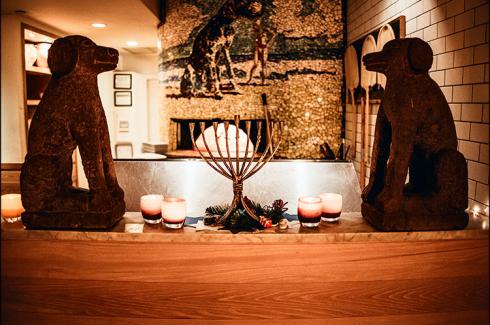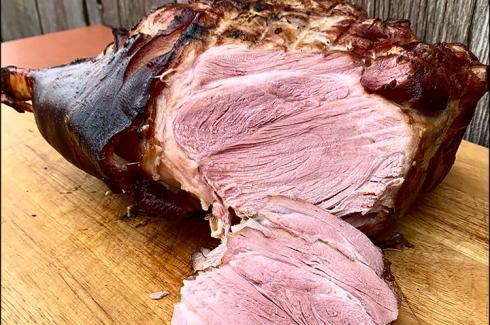After Terrie Sultan stepped down as director of the Parrish Art Museum in Water Mill last June, she did something she hadn’t done in 12 years. She took a vacation. “The nice thing about the summer vacation in the middle of a pandemic was that we had the world’s most exquisite staycation,” she said while looking out over the lush secluded backyard of her home in Southampton.
During summers at the Parrish, “I was working 24 hours a day, seven days a week. So I got out my Nordic crime novels and my French podcasts, and I took the whole summer off. It was life-changing! Of course there was no fear of missing out, because there was nothing happening." While the pandemic was terrible for everyone, “I’m a very optimistic person, and the silver lining for me was an absolute permission to do nothing for three months.”
Might Ms. Sultan, whose career as a museum professional included eight years as the director of the Blaffer Art Museum in Houston before taking the helm of the Parrish in 2008, consider retirement?
Not a chance.
To begin with, she's been doing a lot of writing, contributing essays for a book on the Texas painter Rod Penner and a catalog of work by Jeanne Silverthorne and Bonnie Rychlak, and writing a book for the Sag Harbor artist John Torreano. She also hopes to continue organizing exhibitions, something she has done throughout her career. While acknowledging that, because of the pandemic, museum exhibition schedules have been upended, being a curator “is what I love, and I’ve got some ideas.”
More important, more life-changing, and more immediate is that three weeks ago she and Robin Nicholson, another former museum director, launched Art Museum Strategies, in partnership with Hudson Ferris, a New York City fund-raising firm specializing in the nonprofit sector.
Ms. Sultan noted that the entire museum profession, and cultural institutions generally, is in a state of flux. “The old models are not working, and something has to change,” she said. “Robin and I started this business because we feel that we have a lot to offer, and we can help more people this way.”
One institution might need advice on organizational structure, for example; another might want curatorial help, while others might need to reevaluate diversity, equity, and inclusion. “Board governance, reframing core values, mission statements -- everything is up for grabs. And everybody’s going to need fund-raising.”
“I’ve been a museum professional for 35 years, and I have advanced a lot of institutions to their next levels. I would like to be able to do that for more of my peers, to help them succeed in their goals.”
Within two days after the new Parrish opened in 2012, Ms. Sultan recalled, people were asking her when she was moving on. There was an assumption that once one completed a huge building process, “you would want to go someplace else. I don’t know where that stereotype came from, because every museum director I know who built a new building stayed. Why go through all that and let somebody else have all the fun?”
During the last couple of years, though, she began to sense many changes ahead, not only at the Parrish but everywhere. “And the pandemic just blew all that up. Nobody knows exactly how museums are going to change.”
Ms. Sultan recently attended a day-long seminar produced by Syracuse University on the topic of museums selling works from their collections in order to raise funds. Chris Bedford, the director of the Baltimore Museum, defended his initiative, since thwarted, to sell three major works of postwar art to raise money that could be used to diversify the museum’s collection.
“When people say an artwork serves the community, Chris’s question was, ‘Whose community?’ What exactly does that mean? Look at the tradition of museums in this country. They were all founded by wealthy white industrialists, and who do they mostly serve? Other wealthy white industrialists.”
She acknowledged that school programs and other initiatives bring in members of the community, “but is that service? Is that enough? I don’t really know the answers to all those questions myself. But Robin and I are not the only former art museum directors looking for a new path. There are a lot of us.”
Another thing that will change, she said, is going it alone. “I think you’re going to see museums merging and you’re going to see more group acquisitions,” where museums partner to buy works and then share them. In Bentonville, Ark., she cited the Crystal Bridges Museum of American Art’s "Art Bridges" initiative, which lends works from its own collection to other museums for extended periods.
Mr. Nicholson, Ms. Sultan’s partner, was deputy director of the Virginia Museum of Fine Arts for eight years before heading up the Frick Pittsburgh and then the Telfair Museums in Savannah, Ga. “Robin is Scottish,” she said. “He’s the quintessential Scot, he’s even got a black Scottie dog, and he also has a European point of view, which is very different. We’re a good partnership.”
Ms. Sultan knows Ed Leibman, the founding partner of Hudson Ferris, having hired him several years ago to work at the Parrish. “He was a development consultant, and he did a great job for the museum. Partnering with him will give us all the expertise we need in the fund-raising element.”
One aspect of fund-raising Ms. Sultan won’t miss is the summer gala. “That is really such a terrible business model, to plan all of your fund-raising on parties, although out here it’s key.” She is proud that in 12 years at the Parrish, she never asked an artist to give the museum something to sell.
“I’ve never thought that was ethically right, for me. My brother’s an artist, my husband’s an artist, most of my best friends are artists. I’ve always felt it was wrong to build your business on the backs of artists.”
Ms. Sultan is excited to see the world beginning to open up again. “Hopefully, everyone will take this past horrible year and look for the silver lining and for ways to change and make things better. Because there really isn’t any choice. Things are not going back to the way they were before. You can either be an agent of change or sit back and wring your hands. I’m not a hand-wringer.”




